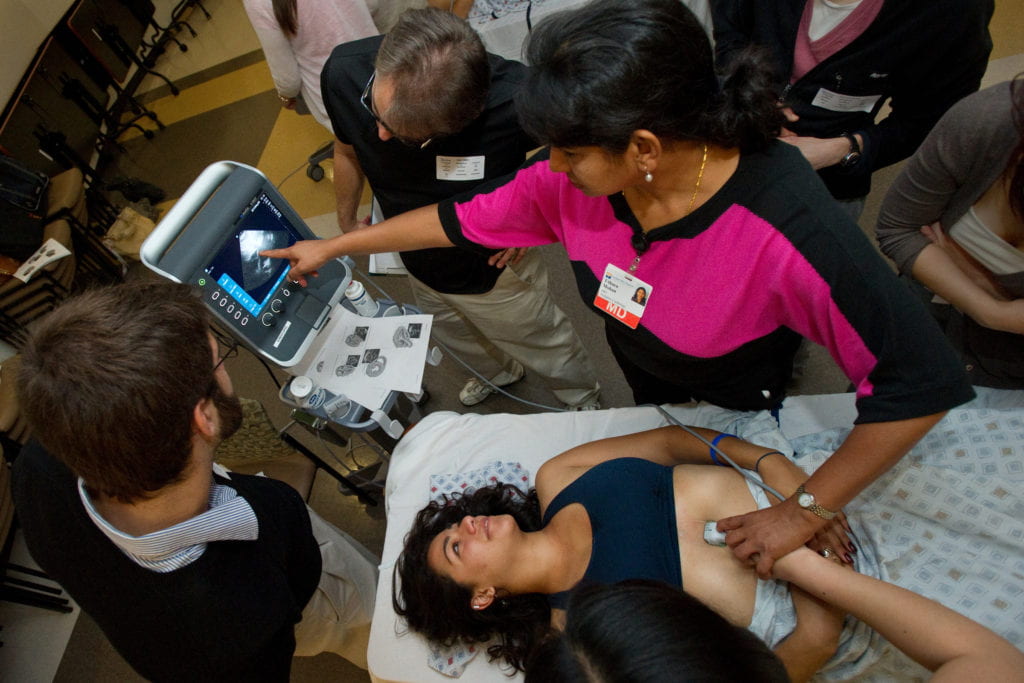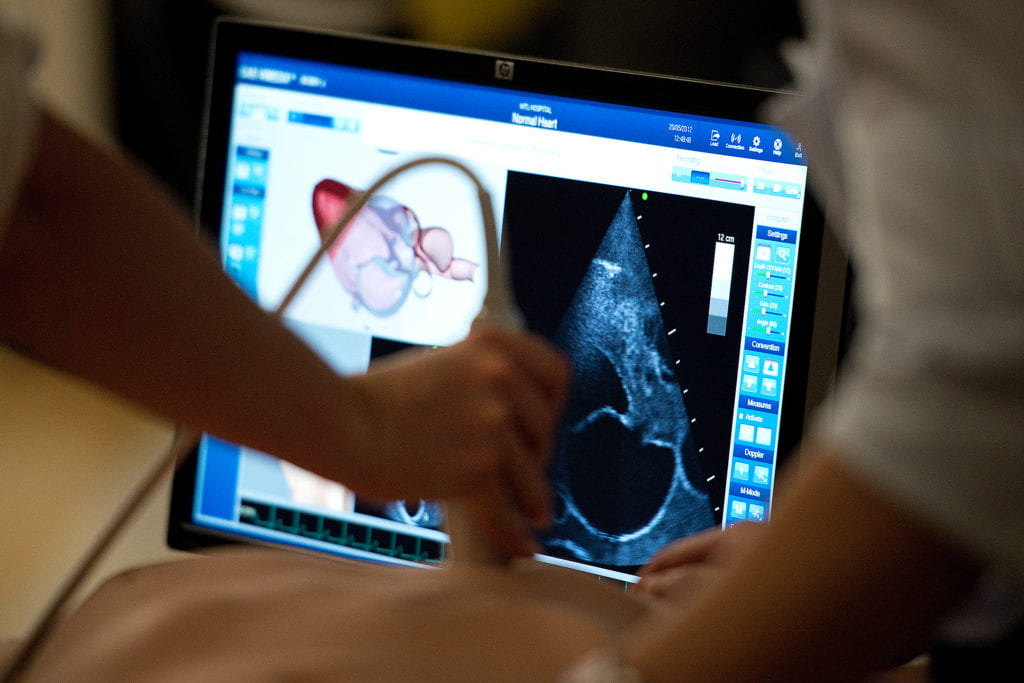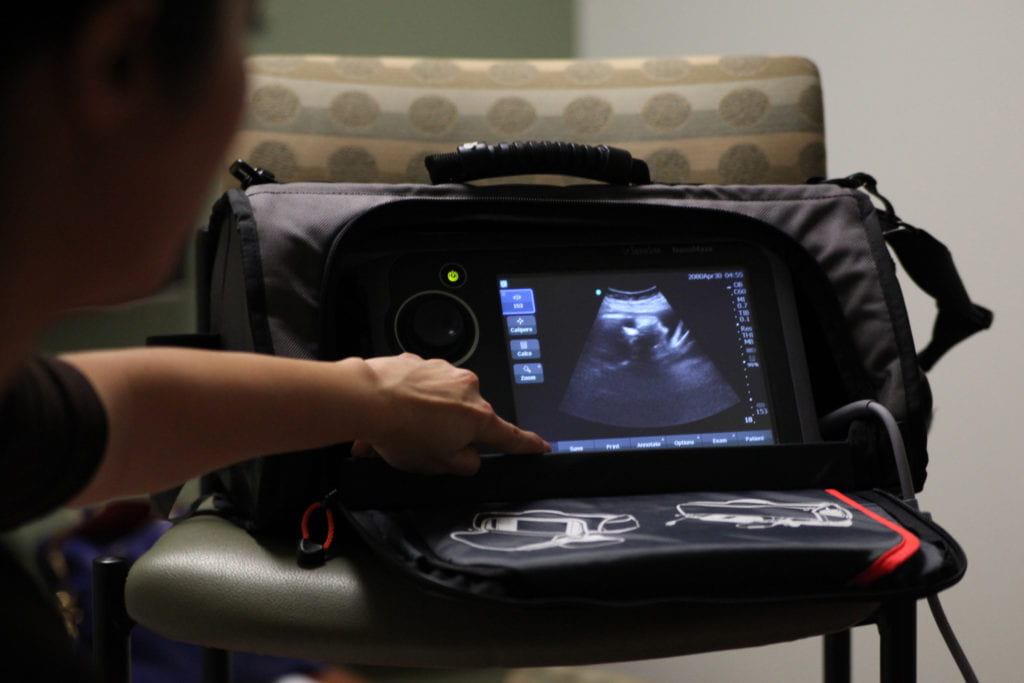Mastering the medical ‘wave' of the future
More than 200 medical, osteopathic and physician assistant students from 14 schools around the state streamed into the Medical Education Building May 20 to be trained in a technology that UCI faculty believe will be an important part of medicine’s future – portable ultrasound.
When Kiah Bertoglio was helping arrange UC Irvine’s UltraFest 2012, she figured that about 30 medical students — 40 tops — would come to learn how to use portable, hand-held ultrasound devices to peer into the human body in a way they’d never done before.
Imagine her surprise when more than 200 medical, osteopathic and physician assistant students from 14 schools around the state streamed into the Medical Education Building on Sunday, May 20, to be trained in a technology that UCI faculty believe will be an important part of medicine’s future.
“This was the first event of its kind anywhere,” says Bertoglio, a third-year medical student and member of the Ultrasound in Medical Education Interest Group. “The response was overwhelming and shows how important tomorrow’s doctors and healthcare workers see portable ultrasound becoming. It provided an incredible opportunity for students to learn and improve bedside ultrasound skills in multiple fields.”
During morning and afternoon sessions, UCI physicians, fellows, residents and students led hands-on workshops in emergency medicine, urology, obstetrics and gynecology, surgery, anesthesia, cardiology and sports medicine, using both human subjects and lifelike simulation mannequins.
“The students love working with the ultrasound,” says Dr. Chris Fox, professor of emergency medicine and director of instructional ultrasound. “They see this as a value added to their education, an extra skill set that empowers them.”
UCI’s medical school is the only one in California to include this cutting-edge technology in its curriculum and one of the first in the nation, he says. Currently utilized mainly in emergency medicine, ultrasound could eventually change how all physicians diagnose their patients.
Regular ultrasound machines are bulky and difficult to use bedside, which limits their use. However, portable devices the size of a briefcase and easily maneuverable in a crowded clinical setting have recently reached the marketplace. Fox first employed them in the emergency room and soon saw their potential for much, much more.
Three years ago, he shared his ideas with SonoSite, the devices’ manufacturer, which granted UCI exclusive rights to integrate the ultrasound technology into medical training.
“We’re giving students the tools they need to practice modern medicine,” Fox says. “This is teaching for the future. When you provide students with the opportunity to actually see the anatomy — organs, blood vessels, bone and muscle — that’s how they really learn. By the time they graduate, our students’ ability to diagnose disease bedside and in the exam room will be unsurpassed by any conventional means of practicing medicine.”
Dr. Ralph Clayman, dean of UCI’s School of Medicine, believes portable ultrasound will become standard in a physician’s “black bag” and foster proactive, personalized healthcare.
During an exam, he explains, a doctor using portable ultrasound can get detailed information — blood flow through the heart and carotid artery, for example — from inside a patient’s body and suggest ways of mitigating any lurking issues.
“That’s the big difference this tool can make,” Clayman says. “And our students are on the crest of this new patient-care wave.”
With events such as UltraFest 2012, they’ll have plenty of company.





